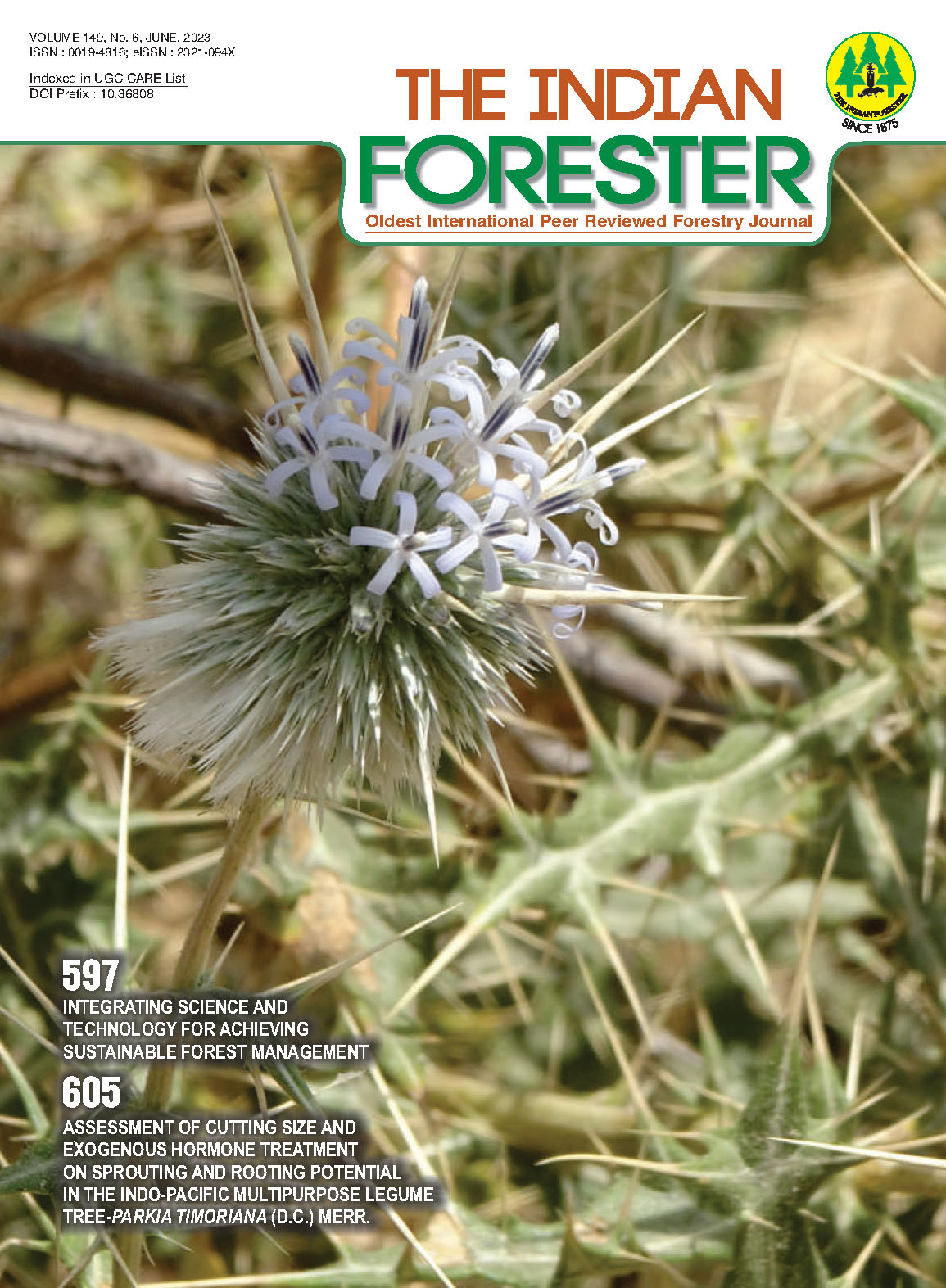Impacts of Regeneration Failure in Population Structire Indan Sandalwood Forest in Marayoor, Kerala
DOI:
https://doi.org/10.36808/if/2023/v149i6/169363Keywords:
Sandalwood, Regeneration, Kerala, Population, Forest.Abstract
Sandalwood (Santalum album) is one of highly prized timber species in the world for its fragrance. The success of its regeneration in forest is highly dependent on seed production, seed dispersal, germination, vitality of a species and presence of biotic disturbances. The present study was conducted in different naturalized sandalwood reserves (SRs) in Marayoor, Kerala to understand population structure and natural regeneration status of sandalwood. All SRs are having un-balanced population structure and seedlings (<30cm girth at breast height) account <4% of the total stems, which indicates indicate a declining population. Regeneration of sandalwood could not improve in all SRs due to heavy grazing by wild animals and cattle despite artificial regeneration and abundant of seed production.Â
References
Balasundaran M. 2010. Improving sandal population in Marayoor sandal reserves through assisted natural regeneration, KFRI Research Report No. 349, 19Pp.
Balasundaran, M. (2010). Improving sandal population in Marayoor sandal reserves through assisted natural regeneration, KFRI Research Report No. 349, Kerala Forest Research Institute, Peechi, Trichur.
Condit, R., Sukumar, R., Hubbell, S. P., and Foster, R. B. (1998). Predicting population trends from size distributions: A direct test in a tropical tree community. American Naturalist, 152(4): 495-509.
IUCN. 2016. The IUCN Redlist of Threatened Species. Version 2016-2. www.iucnredlist.org.
Krishna Bahadur, K.C. (2019). Status and distribution of Sandalwood (Santalum album) in Nepal: A study of Pyuthan district. Species 20, 13-23
Parasad, K.C. (2011). Working plan, Marayoor Sandal Division, Department of Forests and Wildlife, Govt. of Kerala, 381Pp.
Varghese, J. 1976. Munnar Working Plan 1972-73 to 1981-82. Kerala Forest Department, Govt. of Kerala.
Wijayanto, N Juliao D. 2011. Pertumbuhan Tanaman Pokok Cendana (Santalum album L.) pada Sistem Agroforestri di Desa Sanirin, Kecamatan Balibo-Timor Leste. Silvikultur Tropika 3 (1): 119-123.
Yoseph Nahak Seran, Sudarto, Luchman Hakim , Endang Arisoesilaningsih. (2018). Structural model of sandalwood (Santalum album) regeneration in the forest and community plantation in Timor Island, Indonesia. Tropical Lands 2 (2): 41-47.
Downloads
Downloads
Published
How to Cite
Issue
Section
License
Unless otherwise stated, copyright or similar rights in all materials presented on the site, including graphical images, are owned by Indian Forester.





